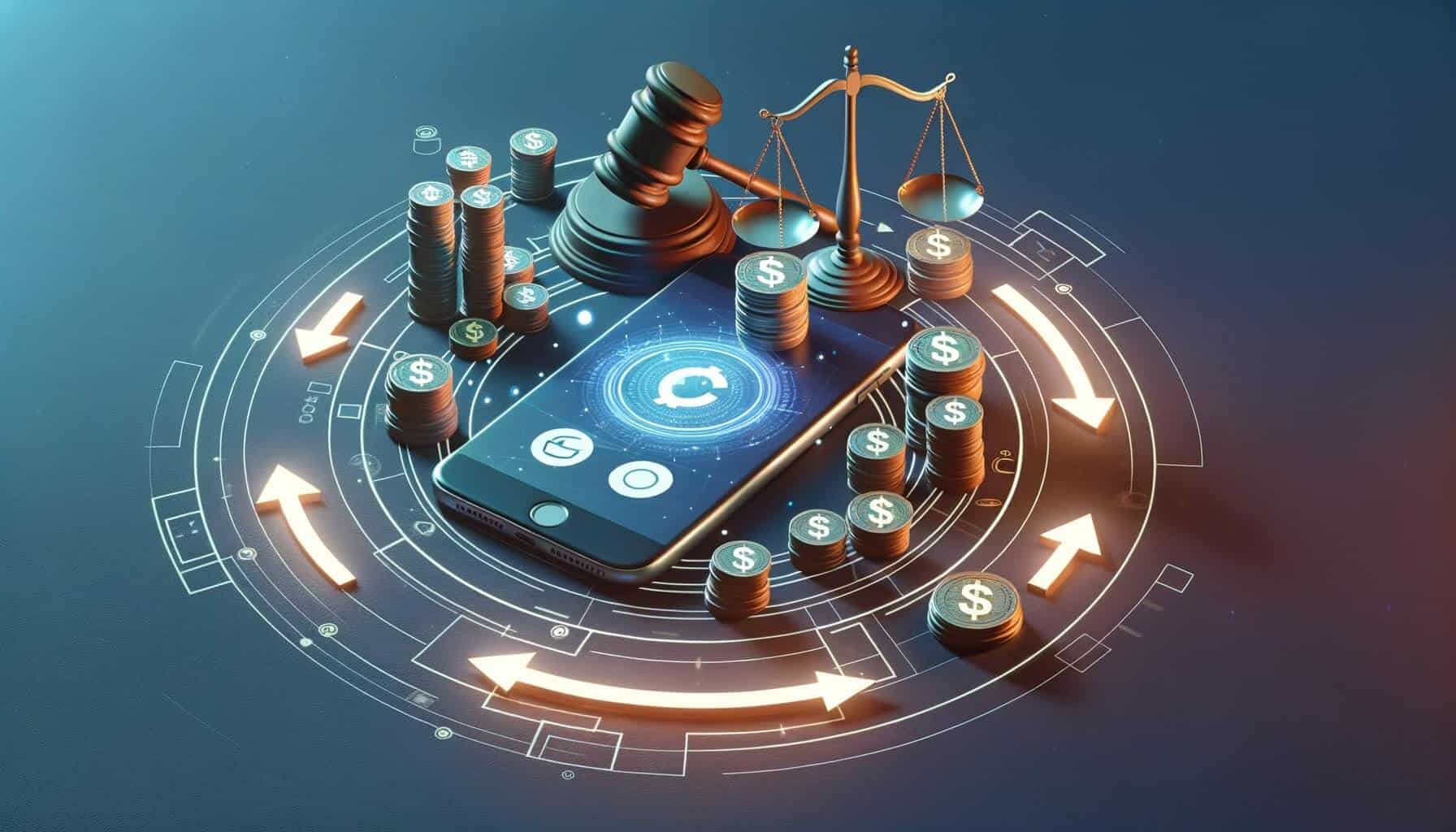
By Carol Peters March 10, 2025
Cash App, a popular peer-to-peer payment platform, has revolutionized the way people transfer money. However, like any financial service, it is not immune to chargebacks. A chargeback occurs when a customer disputes a transaction and requests a refund from their bank or credit card company.
In this comprehensive guide, we will explore the common reasons for Cash App chargebacks, how to avoid them, and the step-by-step process to handle them effectively.
Common Reasons for Cash App Chargebacks and How to Avoid Them

1. Unauthorized Transactions: One of the most common reasons for chargebacks is unauthorized transactions. Customers may claim that they did not authorize a payment or that their account was compromised. To avoid such chargebacks, Cash App users should enable two-factor authentication and regularly monitor their account for any suspicious activity.
2. Dissatisfaction with Product or Service: Another reason for chargebacks is customer dissatisfaction. If a customer feels that the product or service they received was not as described or did not meet their expectations, they may initiate a chargeback. To prevent this, businesses should provide accurate descriptions, clear return policies, and excellent customer service.
3. Technical Issues: Technical glitches can also lead to chargebacks. For example, if a customer is charged multiple times for a single transaction due to a system error, they may request a chargeback. To avoid this, Cash App should regularly update and maintain its platform to minimize technical issues.
4. Fraudulent Activity: Fraudulent transactions are a significant concern for both Cash App and its users. Criminals may use stolen credit card information to make unauthorized purchases, leading to chargebacks. Cash App should implement robust fraud detection measures, such as transaction monitoring and identity verification, to prevent such incidents.
5. Failure to Deliver: If a customer does not receive the product or service they paid for, they may initiate a chargeback. To avoid this, businesses should ensure timely delivery and provide tracking information to customers. Clear communication and transparency are key to preventing chargebacks in such cases.
Step-by-Step Process to Handle Cash App Chargebacks
1. Notification: When a chargeback is initiated, Cash App will notify the merchant via email or through the app. The notification will include details of the disputed transaction, such as the amount, date, and reason for the chargeback.
2. Review the Dispute: The merchant should carefully review the dispute and gather all relevant information, including transaction records, customer communication, and any supporting evidence.
3. Gather Evidence: To effectively dispute a chargeback, merchants must gather compelling evidence to support their case. This may include order confirmations, shipping receipts, customer communication, and any other relevant documentation.
4. Respond to the Dispute: Cash App provides a Dispute Resolution Center where merchants can submit their response to the chargeback. It is crucial to provide a detailed and well-documented response, addressing each point raised by the customer.
5. Communicate with the Customer: Open communication with the customer is essential during the chargeback process. Merchants should reach out to the customer to understand their concerns and attempt to resolve the issue amicably.
6. Provide a Refund or Offer a Resolution: In some cases, it may be more cost-effective and efficient to provide a refund or offer a resolution to the customer rather than going through the chargeback process. This can help maintain customer satisfaction and prevent further disputes.
7. Submit Evidence: Merchants should submit all relevant evidence to Cash App through the Dispute Resolution Center. Clear and concise documentation will strengthen their case and increase the chances of a favorable outcome.
8. Review the Decision: Cash App will review the evidence provided by both parties and make a decision based on the available information. Merchants should carefully review the decision and assess whether further action is necessary.
9. Appeal if Necessary: If the decision is unfavorable, merchants have the option to appeal the chargeback. They should provide additional evidence or address any discrepancies in the initial decision.
10. Learn from the Experience: Regardless of the outcome, merchants should use the chargeback process as an opportunity to learn and improve their business practices. Analyzing the reasons for chargebacks can help identify potential issues and implement preventive measures.
Gathering Evidence: Essential Tips for Winning a Cash App Chargeback Dispute

When disputing a chargeback, gathering compelling evidence is crucial to increase the chances of a favorable outcome. Here are some essential tips for gathering evidence:
1. Keep Detailed Records: Maintain accurate records of all transactions, including order confirmations, receipts, and shipping information. These records will serve as evidence in case of a dispute.
2. Save Customer Communication: Save all communication with the customer, including emails, chat logs, and phone call recordings. These interactions can provide valuable insights into the customer’s concerns and help build a strong case.
3. Take Screenshots: If the dispute involves digital products or services, take screenshots of relevant information, such as product descriptions, terms of service, and any communication with the customer.
4. Document Delivery: If the dispute involves physical products, keep records of the shipping process, including tracking numbers, delivery confirmation, and proof of shipment.
5. Provide Clear Documentation: When submitting evidence, ensure that it is clear, organized, and easy to understand. Label each document and provide a brief explanation of its relevance to the dispute.
6. Use Visuals: Visual evidence, such as photographs or videos, can be powerful in supporting your case. For example, if a customer claims to have received a damaged product, provide visual evidence of the damage.
7. Seek Expert Opinions: If necessary, seek expert opinions or third-party evaluations to support your case. For example, if a customer claims that a product is counterfeit, obtain an expert opinion to prove its authenticity.
8. Maintain Confidentiality: When submitting evidence, ensure that any sensitive customer information is redacted or protected to maintain confidentiality and comply with privacy regulations.
9. Be Timely: Submit your evidence within the specified timeframe provided by Cash App. Failure to do so may result in the chargeback being automatically awarded to the customer.
10. Be Professional: Maintain a professional and respectful tone when communicating with Cash App and the customer. Clear and concise communication will help build credibility and increase the chances of a fair outcome.
Communicating with Customers: Effective Strategies for Resolving Cash App Chargebacks

Open and effective communication with customers is crucial in resolving chargebacks. Here are some strategies to consider:
1. Promptly Respond: Respond to customer inquiries and concerns as soon as possible. Prompt communication shows that you value their feedback and are committed to resolving the issue.
2. Listen and Understand: Take the time to listen to the customer’s concerns and understand their perspective. Empathize with their situation and show genuine interest in finding a resolution.
3. Be Transparent: Provide clear and transparent information about your products, services, and policies. Clearly communicate any limitations, refund policies, or terms of service to avoid misunderstandings.
4. Offer Solutions: Instead of focusing solely on the problem, offer solutions to the customer. Provide alternatives, such as a refund, replacement, or store credit, to address their concerns and maintain customer satisfaction.
5. Document Communication: Keep a record of all communication with the customer, including emails, chat logs, and phone call summaries. This documentation will be valuable in case of a chargeback dispute.
6. Follow Up: After resolving the customer’s concern, follow up to ensure their satisfaction. This demonstrates your commitment to customer service and can help prevent future chargebacks.
7. Provide Clear Instructions: If the customer needs to take any action, such as returning a product or providing additional information, provide clear instructions to avoid confusion or delays.
8. Be Professional: Maintain a professional and courteous tone in all communication. Avoid becoming defensive or confrontational, as this can escalate the situation and damage your reputation.
9. Train Customer Service Representatives: Provide comprehensive training to your customer service representatives to ensure they have the skills and knowledge to handle chargeback disputes effectively. This includes conflict resolution, active listening, and product knowledge.
10. Learn from Feedback: Use customer feedback and chargeback disputes as an opportunity to improve your products, services, and customer experience. Analyze the root causes of chargebacks and implement preventive measures to minimize future disputes.
Navigating Cash App’s Dispute Resolution Center: A User-Friendly Approach

Cash App’s Dispute Resolution Center provides a user-friendly platform for merchants to handle chargebacks. Here are some tips for navigating the center effectively:
1. Familiarize Yourself: Take the time to familiarize yourself with Cash App’s Dispute Resolution Center. Understand the process, requirements, and timelines to ensure a smooth experience.
2. Read the Guidelines: Review Cash App’s guidelines for chargeback disputes. Understand the criteria for submitting evidence, the types of disputes that are eligible for review, and any specific requirements.
3. Organize Your Evidence: Before submitting your response, organize your evidence in a clear and logical manner. Label each document and provide a brief explanation of its relevance to the dispute.
4. Use the Correct Channels: Ensure that you are using the correct channels within the Dispute Resolution Center to submit your response and evidence. Follow the instructions provided by Cash App to avoid any delays or confusion.
5. Be Concise: When submitting your response, be concise and to the point. Clearly address each point raised by the customer and provide supporting evidence where necessary.
6. Double-Check Your Submission: Before submitting your response, double-check all the information and evidence provided. Ensure that there are no errors or omissions that could weaken your case.
7. Follow Up: After submitting your response, regularly check the Dispute Resolution Center for updates or requests for additional information. Respond promptly to any requests to avoid delays in the resolution process.
8. Seek Assistance if Needed: If you encounter any difficulties or have questions about the Dispute Resolution Center, reach out to Cash App’s customer support for assistance. They can provide guidance and clarification on the process.
9. Be Patient: The chargeback process can take time, and it is important to be patient. Avoid becoming frustrated or discouraged and trust the process to reach a fair resolution.
10. Learn from the Experience: Regardless of the outcome, use the chargeback process as an opportunity to learn and improve your business practices. Analyze the reasons for chargebacks and implement preventive measures to minimize future disputes.
Expert Advice: Best Practices for Preventing Cash App Chargebacks
To prevent Cash App chargebacks, it is essential to implement best practices. Here are some expert tips:
1. Clear Communication: Clearly communicate your products, services, and policies to customers. Provide accurate descriptions, pricing information, and terms of service to avoid misunderstandings.
2. Accurate Descriptions: Ensure that your product or service descriptions are accurate and detailed. Include relevant information such as dimensions, specifications, and any limitations.
3. Excellent Customer Service: Provide exceptional customer service to address any concerns or issues promptly. Respond to customer inquiries in a timely manner and go above and beyond to resolve any problems.
4. Secure Payment Processing: Implement robust security measures to protect customer payment information. Use encryption technology, secure servers, and regularly update your systems to prevent unauthorized access.
5. Two-Factor Authentication: Encourage Cash App users to enable two-factor authentication to add an extra layer of security to their accounts. This can help prevent unauthorized transactions and reduce the risk of chargebacks.
6. Fraud Detection: Implement fraud detection measures, such as transaction monitoring and identity verification, to identify and prevent fraudulent activity. Regularly review transaction patterns and flag any suspicious activity.
7. Clear Return Policies: Clearly communicate your return policies to customers. Provide information on how to initiate a return, any associated fees, and the timeframe for returns. This transparency can help prevent chargebacks due to dissatisfaction with products or services.
8. Monitor Account Activity: Regularly monitor your Cash App account for any suspicious activity. Keep an eye out for unauthorized transactions, multiple charges for a single transaction, or any other irregularities.
9. Educate Customers: Educate your customers about the chargeback process and the impact it can have on your business. Encourage them to reach out to you directly to resolve any issues before initiating a chargeback.
10. Analyze Chargeback Trends: Regularly analyze chargeback trends to identify potential issues. Look for patterns or common reasons for chargebacks and take proactive measures to address them.
Analyzing Chargeback Trends: How to Identify and Address Potential Issues
Analyzing chargeback trends is crucial to identify potential issues and address them effectively. Here’s how to do it:
1. Review Chargeback Data: Collect and review data on chargebacks, including the reasons, transaction details, and customer feedback. This data will provide insights into the root causes of chargebacks.
2. Identify Patterns: Look for patterns or commonalities among chargebacks. Are there specific products, services, or customer segments that are more prone to chargebacks? Identifying patterns can help pinpoint potential issues.
3. Customer Feedback: Pay attention to customer feedback, both positive and negative. Analyze customer reviews, surveys, and social media comments to identify any recurring themes or concerns.
4. Internal Processes: Assess your internal processes to identify any gaps or weaknesses that may contribute to chargebacks. Are there any areas where miscommunication, errors, or delays occur? Addressing these issues can help prevent chargebacks.
5. Product or Service Quality: Evaluate the quality of your products or services. Are there any recurring issues or complaints? Addressing quality concerns can significantly reduce chargebacks due to customer dissatisfaction.
6. Customer Support: Review your customer support processes and assess their effectiveness. Are customers receiving timely and satisfactory support? Improving customer support can help resolve issues before they escalate to chargebacks.
7. Payment Processing: Evaluate your payment processing systems and providers. Are there any technical issues or vulnerabilities that may lead to chargebacks? Regularly update and maintain your systems to minimize such risks.
8. Training and Education: Provide comprehensive training to your employees on chargeback prevention and resolution. Ensure that they are equipped with the knowledge and skills to address customer concerns effectively.
9. Collaboration with Payment Providers: Collaborate with your payment providers, such as Cash App, to understand their chargeback policies and guidelines. Stay updated on any changes or updates that may impact your business.
10. Continuous Improvement: Use the insights gained from analyzing chargeback trends to implement continuous improvement strategies. Regularly reassess your processes, products, and customer experience to minimize chargebacks and enhance customer satisfaction.
FAQs
Q.1: Can I dispute a chargeback on Cash App?
Answer: Yes, you can dispute a chargeback on Cash App by providing evidence to support your case. It is important to gather all relevant information and submit it to Cash App for review.
Q.2: How long does it take to resolve a chargeback dispute on Cash App?
Answer: The time it takes to resolve a chargeback dispute on Cash App can vary. It can take anywhere from a few days to several weeks for Cash App to review the evidence and reach a decision.
Q.3: What happens if I lose a chargeback dispute on Cash App?
Answer: If you lose a chargeback dispute on Cash App, the disputed amount will be refunded to the customer. It is important to learn from the experience and take steps to prevent future chargebacks.
Q.4: Can I prevent chargebacks from happening on Cash App?
Answer: While it is not possible to completely prevent chargebacks, there are steps you can take to minimize the risk. This includes keeping your Cash App account secure, providing clear and accurate descriptions of products or services, and maintaining open lines of communication with customers.
Conclusion
In conclusion, understanding how to handle Cash App chargebacks is essential for any user of the platform.
By familiarizing yourself with the common reasons for chargebacks and taking steps to avoid them, following a step-by-step process to handle chargebacks, gathering strong evidence, and effectively communicating with customers, you can increase your chances of resolving chargeback disputes successfully.
Additionally, being aware of Cash App’s Buyer Protection Policy and its role in chargeback disputes can help you navigate the process more effectively.
